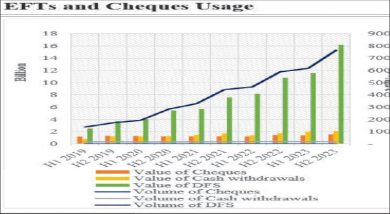Malawi grain reserves fall to 3 percent

Malawi’s stocks in the maize silos, the Strategic Grain Reserves (SGR,) stood at a meagre three percent of a target of 30 000 tonnes by mid-July pointing to an imminent food crisis.
The Famine Early Warning System Network (Fewsnet) July 2013 report notes that through funding from Norway and Ireland, the SGR was required to replenish about 30 000 tonnes down from 50 000 due to rising prices.
The poor levels of maize stocks in the SGR mean that Government will not be able to control maize prices during lean periods.
The imminent maize shortage and its associated high prices may induce a rise in inflation—measure by the consumer price index (CPI)—of which 50.2 percent is the food basket. The consequent rising inflation rate may see the Reserve Bank of Malawi maintaining its tight monetary policy, including upholding high interest rates.
Fewsnet, in the report, notes that a substantial number of households—about 66 percent—are already engaging in some form of food related coping in order to access food.
“Through funding commitments from Norway and Ireland, the NFRA was expected to replenish 50 000 tonnes of maize, however, this fixed financial commitment was based on last year’s maize grain rate of K80 per kg. Given that current prices are more than 200 percent above last year’s, the funds pledged by donors can only cover about 30 000 tonnes of maize
“[About] 13 percent of households of the targeted population exhibited poor consumption—maize and vegetables—during the time of the assessment in June 2013 while 35 percent of the households surveyed exhibited borderline consumption—diets comprised of only maize, vegetables, and pulses. Such high levels of borderline consumption at harvest time are atypical in Malawi. About 42 percent of the households were spending more than 75 percent of their income on food at harvest time,” reads the report in part.
The report adds that the Humanitarian Response Committee made recommendations on how to improve the replenishment of maize grain stocks in the SGR by making price adjustments, expediting payments by the SGR, and securing contract waivers in order to increase the quantities delivered to SGR depots.
However, NFRA acting chief executive officer Clement Lwanda was not available for an immediate comment.
But, Lwanda was earlier quoted in the press that the reserves were completely depleted after last year’s crisis. He noted that NFRA is building from zero and that the situation will be helpless for consumers if prices begin to rise on the market as the reserves will not be adequate to stabilise the prices.
Based on Ministry of agriculture and Food Security third round estimates, a maize surplus of 194 339 tonnes is expected after fulfilling the national requirement but this includes irrigated crop which is yet to be realised, and any underperformance on the projected 551 000 tonnes of the irrigated crop will reduce the surplus.






Atsogoleri omvetsa chifundo inu.mukupereka 30billion ku state house ndi cholinga choti a pulezident aziyenda yenda.ayi zikomo.
This is no surprise looking at the rate Joyce Banda and her husband crisscrossed the land of Malawi in the name of alleviating hunger, assisting the deprived families, acting as a mother who has her own children by syphoning the already depleted silos then at the end of her clueless exercise rising up claiming that the same maize she misused got rotten due to poor storage. No wonder Dr. Ntaba is telling you that instead of hinging on baseless politicking, going on uncalled for escapades against chiefs, by self-praising, by amassing wealth illicitly, by travelling unnecessarily, by not staying in the office, stooping so low by sponsoring musical groups, by arresting innocent citizens of Malawi, by demonizing strong opposition leadership, by sidelining your initial running mate (Joker), by refusing to declare your assets etc. etc. instead she is groping about like a blind person due to lack of knowledge and literally non-existing assistance from her followers and those people who are close to her only bent on reaping where they did not sow. At the rate Malawi is going, in the next twelve months don’t be amazed if we close shop because of poor management and leadership. This is why I mentioned this other day that for a person to run for the Presidency office certain qualifications need to be met i.e. academic qualifications, experience, wealthiness and indeed a nod from his/her party; failing which then such type of people must be discarded into the bin to be heard no more in political terms as they are basically non-starters – possibly ‘Mandasi business’ – yes!!